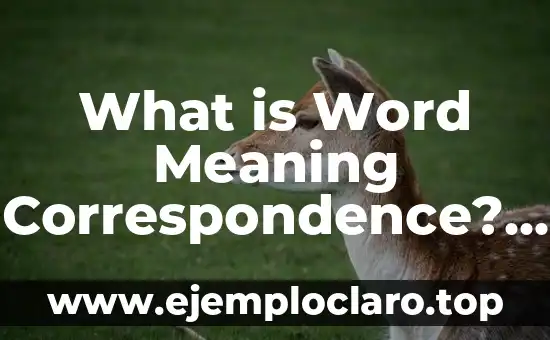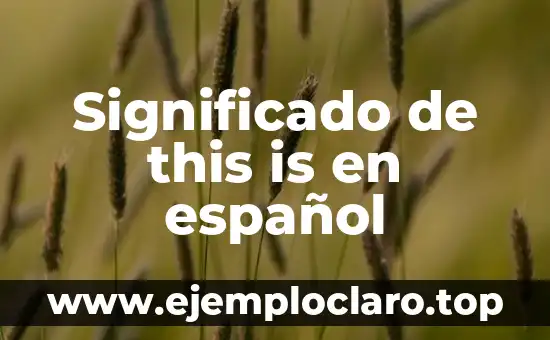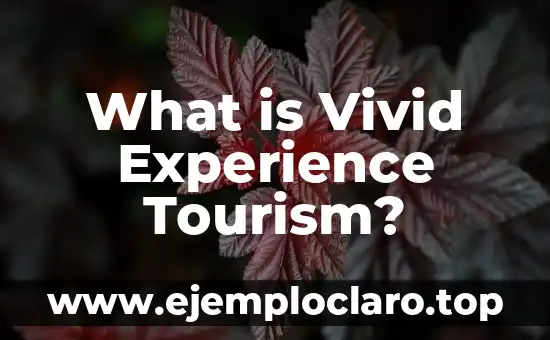In the realm of travel, vivid experience tourism refers to a form of tourism centered around immersive and meaningful experiences. This concept goes beyond traditional sightseeing, emphasizing engagement with local cultures, environments, and communities. It’s about creating lasting memories through active participation rather than passive observation.
¿Qué es el turismo de experiencias vivas?
El turismo de experiencias vivas es un enfoque que se centra en ofrecer a los viajeros actividades e interacciones que les permiten sumergirse profundamente en la cultura, la naturaleza y las comunidades locales. Este tipo de turismo busca generar conexiones significativas y memorias duraderas, más allá del turismo tradicional. Por ejemplo, en lugar de simplemente visitar un lugar turístico, los viajeros pueden participar en talleres, festivales locales o actividades al aire libre que les permiten experimentar de primera mano la esencia del destino.
The Importance of Memorable Travel Experiences
Memorable travel experiences are crucial as they contribute to personal growth and cultural understanding. When travelers engage deeply with a destination, they often return home with new perspectives and skills. For instance, participating in a local cooking class can teach culinary techniques while also fostering cross-cultural connections. These experiences not only enrich the traveler’s life but also support local economies and preserve traditions.
Ejemplos de Turismo de Experiencias Vivas
Examples of vivid experience tourism include:
También te puede interesar

The world of boxing is buzzing with excitement as two of the most popular internet personalities, KSI and Tommy Fury, are set to face off in the ring. The highly anticipated fight has been making headlines for months, and fans...

Word meaning correspondence refers to the relationship between words and their meanings, exploring how language assigns meaning to words. This concept is crucial in linguistics, psychology, and communication, as it examines how we understand and use words effectively.

¿Alguna vez has jugado a Sims 4 y te has preguntado dónde está el hospital? No estás solo. Muchos jugadores de Sims 4 se han encontrado en la misma situación, especialmente después de instalar paquetes de expansión como Get to...

Yesterday Is History o El ayer es historia es una expresión que invita a reflexionar sobre el pasado y el presente. Este dicho, que se ha popularizado en diferentes culturas, sugiere que lo que sucedió ayer ya forma parte de...

En el idioma español, la expresión this is se traduce como esto es. Aunque pareciera sencilla, esta frase tiene un significado profundo y versátil que se utiliza en una variedad de contextos. A lo largo de este artículo, exploraremos detalladamente...

This Is Me Now es el título del próximo álbum de estudio de la cantante y actriz Jennifer Lopez, que se espera que sea lanzado en un futuro cercano. Este álbum marca un nuevo capítulo en la carrera de la...
– Adventure Sports: Activities like rock climbing or white-water rafting that challenge participants and connect them with nature.
– Local Festivals: Joining in cultural celebrations allows travelers to experience music, dance, and traditions firsthand.
– Cooking Classes: Learning to prepare local dishes using traditional ingredients and methods.
Each of these experiences offers a unique way to engage with a destination, creating vivid memories and a deeper understanding of the local way of life.
The Benefits of Immersive Travel
Immersive travel offers numerous benefits, including psychological well-being and environmental impact. Engaging in local activities can reduce stress and increase satisfaction. Additionally, many immersive tourism initiatives support conservation efforts and community development, promoting sustainable tourism practices.
Top Destinations for Vivid Experiences
Destinations known for vivid experiences include:
- New Zealand: Adventure sports like bungee jumping and hiking.
- Japan: Participating in tea ceremonies and martial arts classes.
- India: Attending yoga retreats and cultural festivals.
These locations offer a variety of immersive activities that cater to different interests and preferences.
Transforming Travel into Unforgettable Memories
Transforming travel into unforgettable memories involves more than just visiting landmarks. It’s about engaging in activities that create lasting impressions. Whether it’s learning a new skill, exploring untouched natural beauty, or immersing oneself in a different culture, these experiences stay with travelers long after their journey ends.
¿Para qué sirve el turismo de experiencias vivas?
El turismo de experiencias vivas serves to enrich travelers’ lives through meaningful interactions and personal growth. It fosters cultural exchange and supports local communities, contributing to sustainable tourism. Examples include homestays where travelers live with local families, gaining insights into their daily lives and traditions.
Understanding Immersive Tourism
Immersive tourism, a synonym for vivid experience tourism, involves activities that deeply engage travelers with their surroundings. This approach differs from conventional tourism by emphasizing participation over observation. For instance, volunteering for conservation projects allows travelers to contribute to environmental efforts while gaining hands-on experience.
The Impact of Vivid Experiences on Travelers and Society
Vivid experiences have a profound impact on both travelers and society. For travelers, they offer personal growth and new perspectives. Societal benefits include cultural preservation and economic support for local communities. These experiences often lead to a deeper appreciation and respect for different cultures.
The Meaning of Vivid Experience Tourism
Vivid experience tourism is about creating meaningful connections through travel. It involves engaging in activities that offer insight into local cultures and environments. This form of tourism is not just about seeing sights but about experiencing life in a new and profound way.
¿Cuál es el origen del término turismo de experiencias vivas?
El término turismo de experiencias vivas emerged from the evolution of travel preferences towards more immersive and meaningful experiences. Historically, travelers sought unique encounters that went beyond the typical tourist attractions, leading to the development of this tourism form focused on deep engagement and cultural interaction.
The Rise of Vivid Travel Experiences
The rise of vivid travel experiences can be attributed to travelers’ increasing desire for authenticity and depth. As people seek more than just a vacation, the demand for immersive activities has grown, driving the development of this tourism sector and shaping the future of travel.
¿Cómo elegir las mejores experiencias vivas?
Choosing the best vivid experiences involves considering personal interests and the destination’s offerings. Researching local activities, reading reviews, and seeking recommendations can help travelers select experiences that align with their goals, ensuring a fulfilling and memorable journey.
How to Use Vivid Experience Tourism in Travel Planning
Incorporating vivid experience tourism into travel planning involves identifying activities that offer deep engagement. Examples include participating in local workshops, attending cultural events, or engaging in outdoor adventures. These activities should be integrated into the itinerary to create a balanced and enriching travel experience.
INDICE

